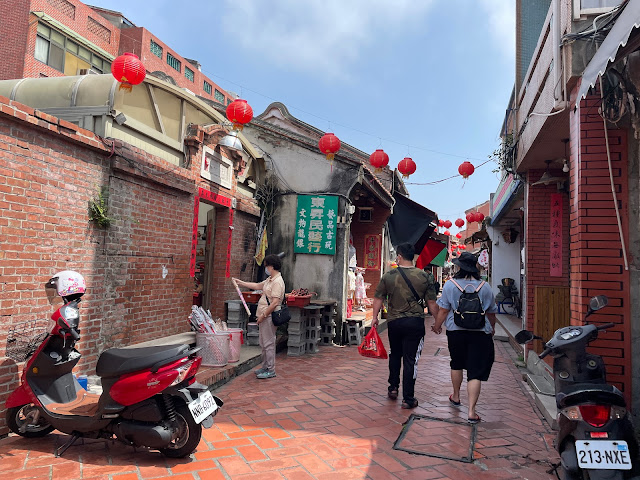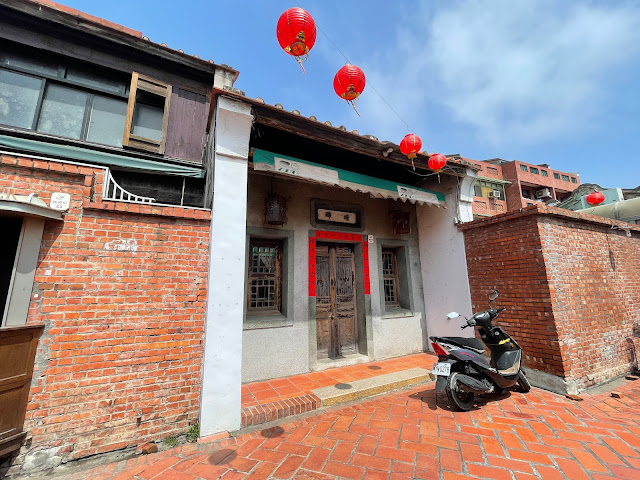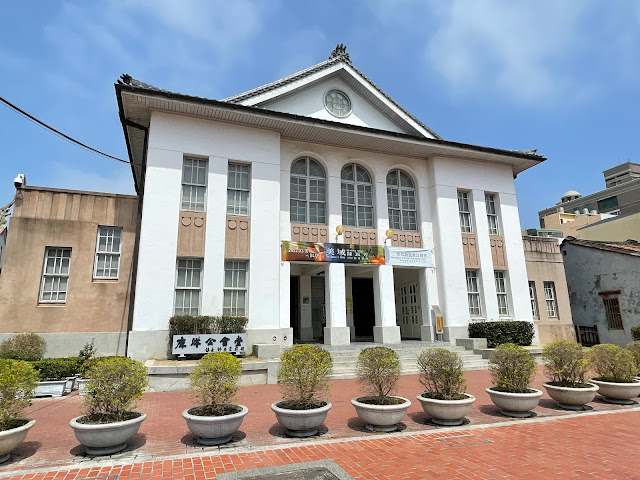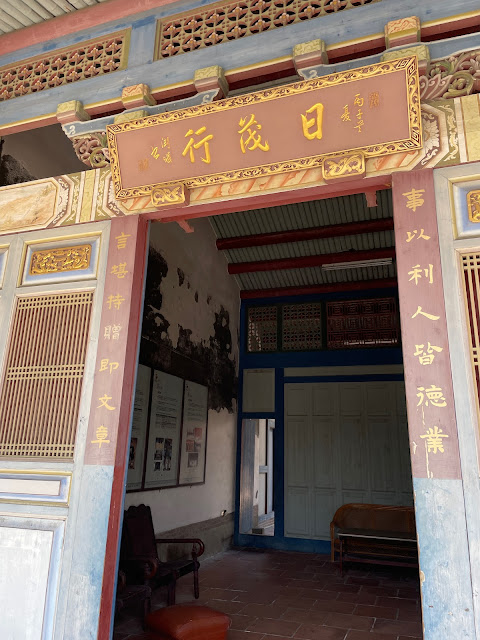Lately, we've had very little time for travel. We managed to take advantage of our only free day by driving to Yunlin and leaving our son with his grandparents. Afterward, we headed to Lukang to enjoy some time alone. Since we rarely visit Changhua, I was quite excited to explore the old town of Lukang and try some new foods there.
Lugang Old Street (鹿港老街)
Lukang Old Street is primarily composed of Yaolin Street and Putou Street. During the Dutch and Qing Dynasty periods, Lukang served as Taiwan's most important foreign business port and experienced prosperity through commercial development.
In 1934, during the Japanese occupation, urban corrections were implemented in Lukang. Tianlao Street (now Zhongshan Road) was widened into a large road, and the houses on both sides gradually transformed into modern concrete architecture. However, Yaolin and Putou Old Street, running parallel to Zhongshan Road, still retain the traditional pattern of Lugang Old Street. In 1986, the government designated it as the Lukang Ancient Street Preservation Area.
Lukang Old Street encompasses Yihexing, Xinzu Palace, Guihua Lane, and Lukang Public Hall, with a total length of over 500 meters. It preserves early storefront buildings and long-striped Fujian-style structures. The total length of the houses ranges from 40 to 70 meters, representing the architectural style from the Qing Dynasty to the early years of Taiwan's history. Lukang boasts the second-highest number of historic sites, second only to Tainan.
With a history of approximately 200 years, Moru Lane consists of two adjacent long-shaped houses. The lane spans about 80 meters, with the narrowest point measuring around 70 centimeters. Originally, during the Qing Dynasty, Moru Alley was used by residents to dispose of sewage into the ditch of the old port. Throughout the Japanese occupation, the ditch was lined with red bricks and gutters, gradually forming the present-day passage.
Due to the narrow length of Lukang's long houses, several small doors within the lane provide access to the atrium and backyard on both sides. As men and women meet in opposite directions within the narrow lane, they must walk sideways to pass each other. The woman's prominent chest became a factor in this unique scenario. When men and women pass each other and brush against one another, the men may accidentally touch the women's chest. This gave rise to the lane's name, "Junzi Lane" or "Gentleman's Lane," while the average person refers to it as "Touching the Breast Alley."
Jiuqu Alley (九曲巷)
Jiuqu Lane refers to the curved roadways within the first market of Lugang Town. Jiuqu Lane also encompasses the narrow lanes of the town's main roads, serving three functions:
Windproof: After the Mid-Autumn Festival, the Lugang area often experiences strong northeast monsoons known as the "Nine Winds." The curved roadways help to weaken the wind's impact.
Anti-theft: The curved and interconnected lanes disperse the strength of potential thieves, making it difficult to attack and defend against them.
Avoiding evil: It is believed that ghosts only travel in straight lines, so the curved lanes are thought to ward off evil spirits.
Lukang Culture Center (鹿港公會堂)
The Lukang Public Hall has been designated as a county-designated historic site since July 14, 2000. The site formerly housed the Xiajiao Guild Hall and the Wanchun Palace, which was dedicated to the prince of the Su Mansion. In 1919, the temple was demolished to construct the public hall. Following World War II, the public hall was renamed "Zhongshan Hall" and became the office of the Lugang District Party Office of the Kuomintang. In 1980, local residents raised funds to rebuild the hall, which officially opened on January 20 of the following year as the Lukang Elderly Guild Hall. In 2007, the Lugang Town Hall requested the elderly residents to move out to facilitate renovations of the old public hall. Despite the resistance, the restoration was eventually completed, and on March 13, 2010, it became the "Lukang Art Museum."
The Wanchun Palace, which was demolished to construct the Lukang Public Hall, was originally built in 1769. Following its demolition, the statues and other cultural relics from the temple were relocated to the Fengshan Temple in Lukang.
Half sided well (半邊井)
Banbianjing is located within the Wang family's residence. Its distinct feature is that one side of the well is inside the house's wall, while the other side extends outside the wall. In the past, digging a well to obtain water was a luxury affordable only to the wealthy. As a result, wealthy families in Lugang would dig wells near their homes, with one side of the well inside the wall for their family's use and the other side outside the wall for passers-by or less fortunate individuals to fetch water. Similarly, there are other half-sided wells found between two neighboring families. Nowadays, with the prevalence of tap water, almost all half-sided wells are closed and unused.
Rimao Hang (日茂行)
In 1765, Lin Zhensong, the owner of Rimao Hang, came to Taiwan from Yongning, Quanzhou, to engage in business and settled in Lugang. In 1784, Lugang was officially opened as a port, and it is speculated that Rimao Hang was established during this period.
In 1777, during the Qing Dynasty, Lin Zhensong made donations to establish "Jingyi Garden," a charitable organization in Lugang. This organization, through the collection of calligraphy papers, construction of burial mounds, collection of remains, and repair of bridges, benefited the local community and became the largest charitable organization at the time. Additionally, Rimao Hang was actively involved in local affairs, such as the relocation of the Longshan Temple in Lugang and the construction of the Tianhou Palace.
In 1788, after the death of his mother, Lin Zhensong returned to Quanzhou for the funeral and eventually settled there. Lin Tingzhang, the fifth son of Lin Wenjun, and his grandnephew Lin Shixian were elected to carry on the family's business from the Qianlong period to the middle of the Daoguang Dynasty. Rimao Hang was once the leading business establishment in Lugang. However, as the accumulation of silt in the river affected shipping, the business of Rimao gradually declined, and the family's participation in local affairs waned.




































0 komentarze:
Post a Comment